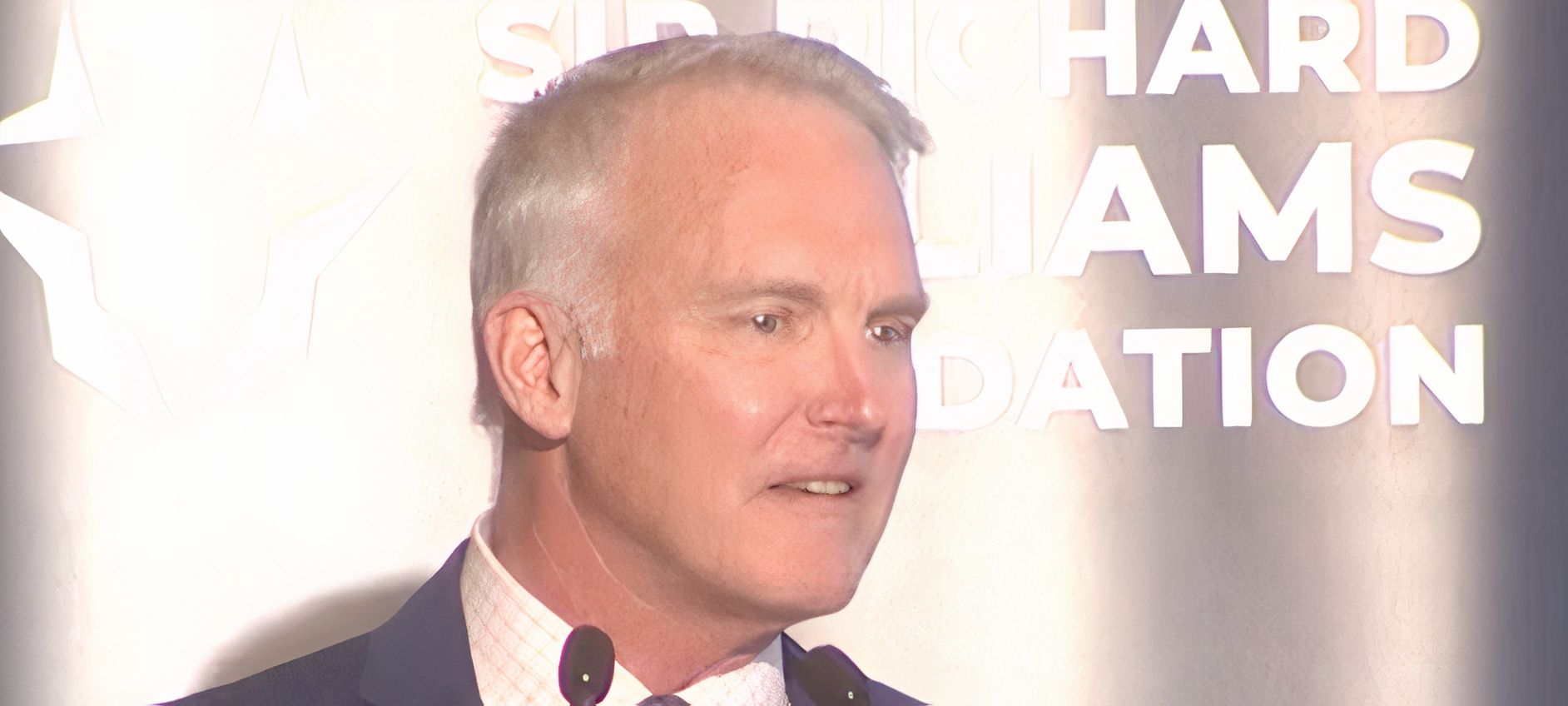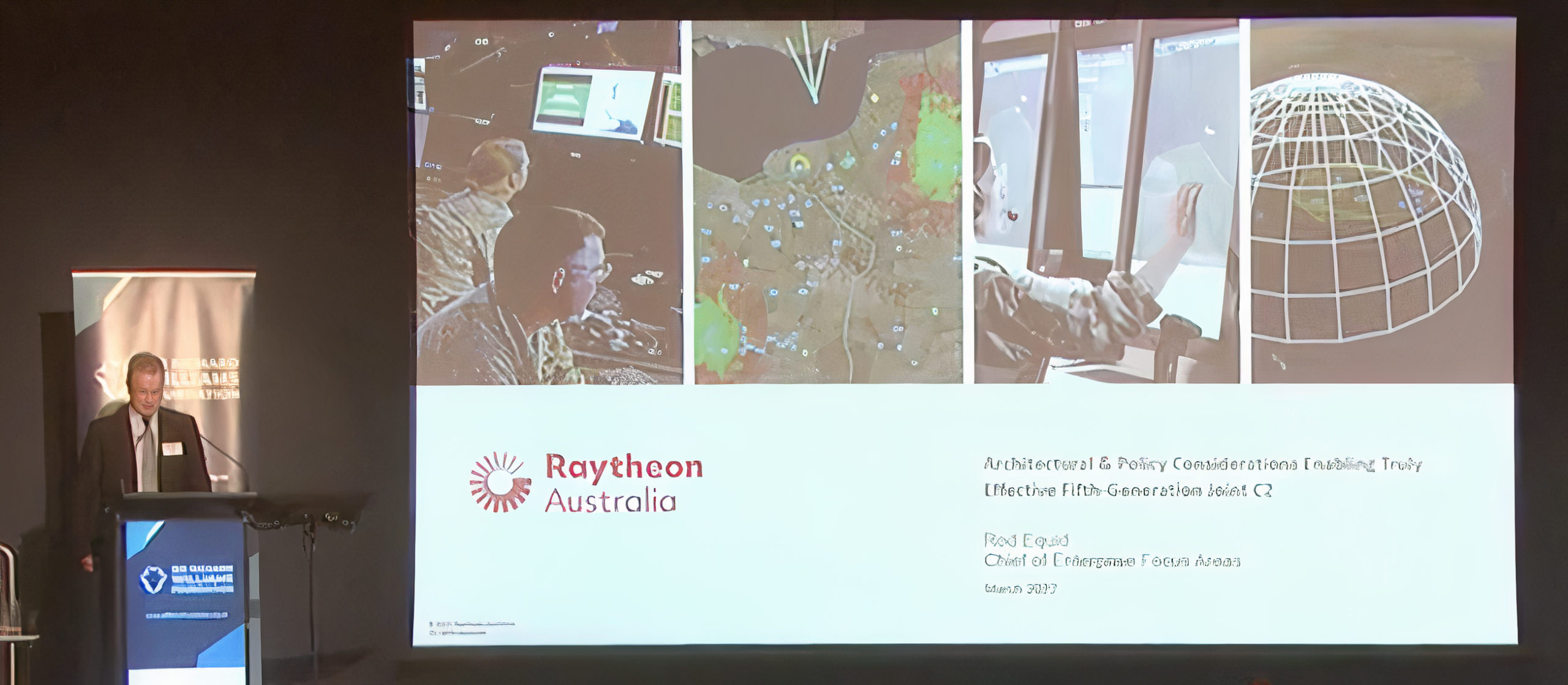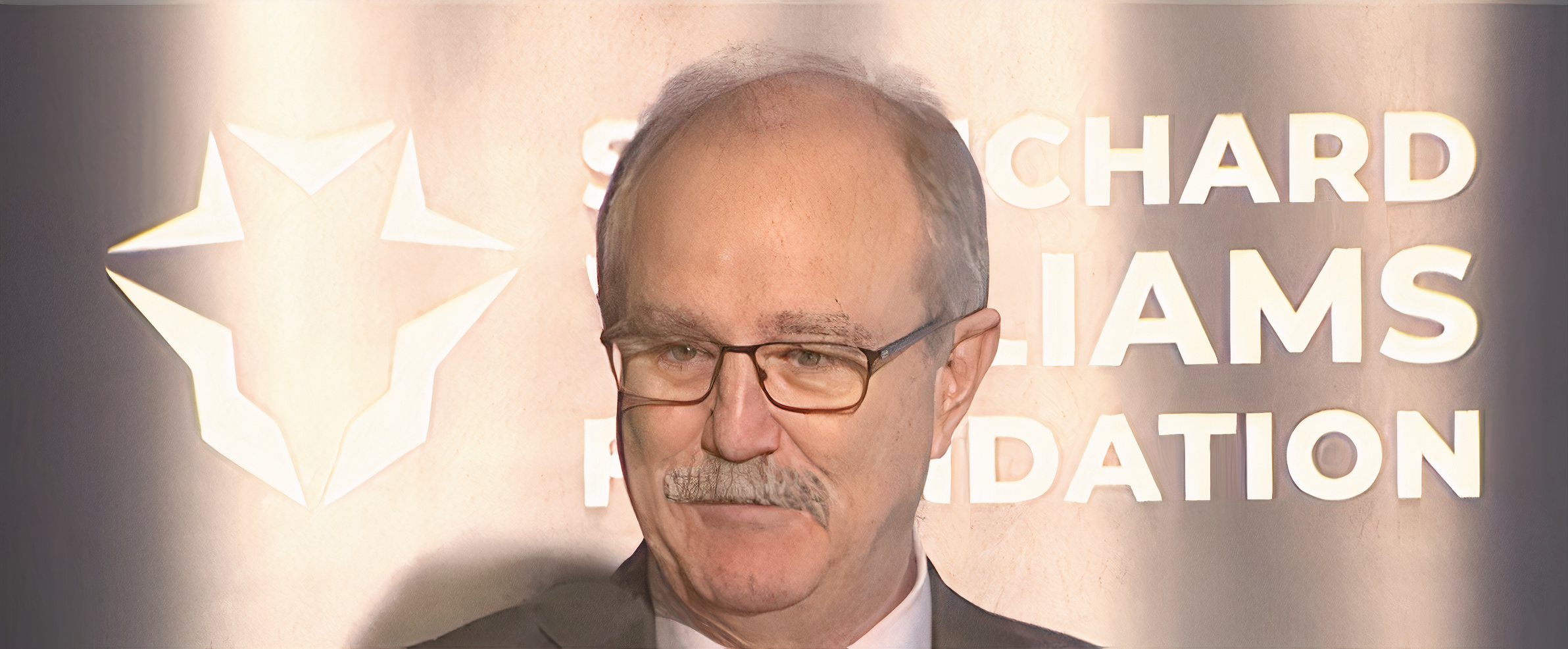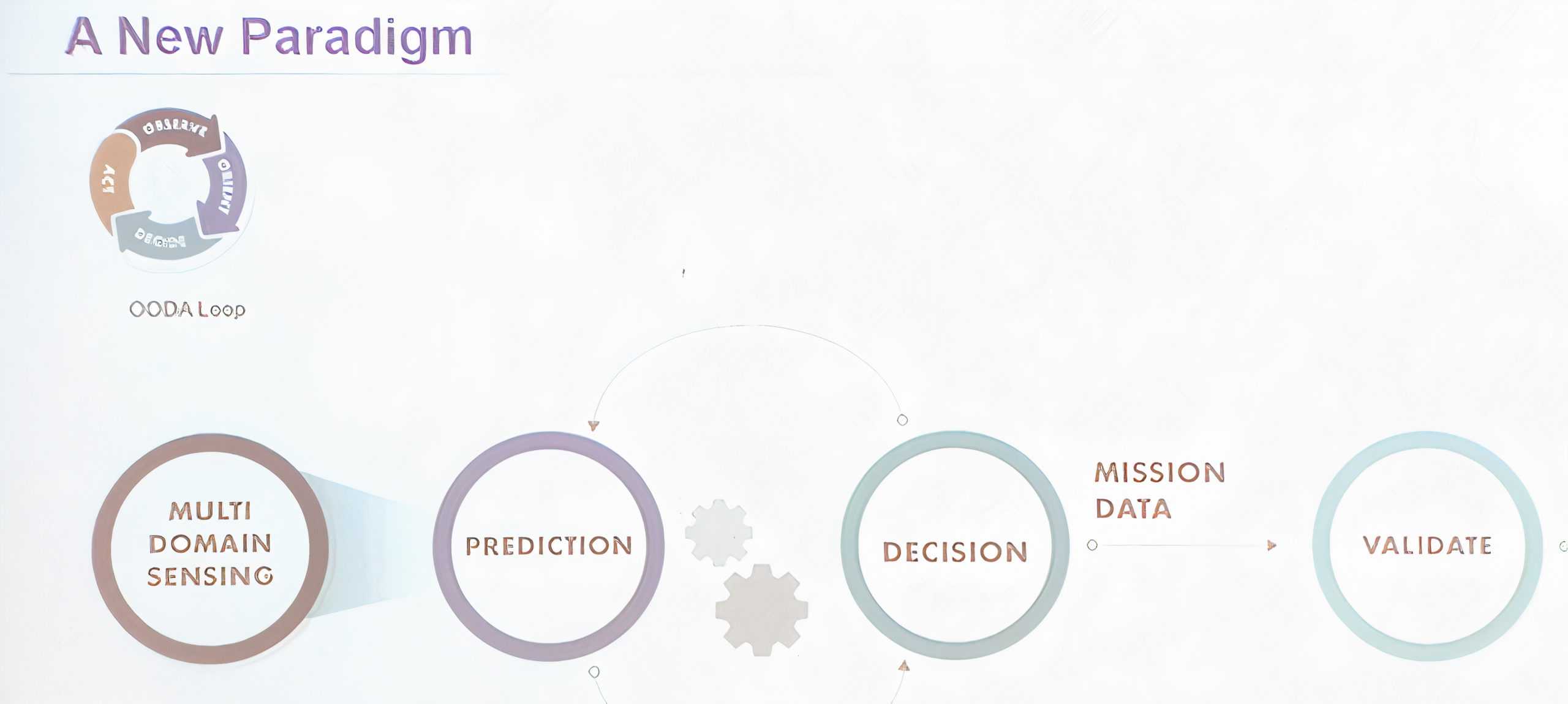By Robbin Laird
Three representatives of the defense industry provided their perspectives on the way ahead for the networked integrated force at the Williams Foundation seminar on March 24, 2022.
Those three representatives were: Tom Rowden, Vice President International Strategy and Business Development for Rotary and Mission Systems (RMS) at Lockheed Martin; Rod Equid, Chief of Enterprise Focus Areas, Raytheon Australia, who was previously the Chief Executive Officer of the AWD Alliance, the organization charged with delivering Australia’s next generation warships and AVM Chris Deeble AO, CSC (Retd.), Executive Director Strategy, Northrop Grumman Australia
Tom Rowden
Rowden underscored the importance of what the Australian’s have focused on in terms of joint by design. How to get better at baking in interoperability rather than doing after-market patch ups to connect platforms and create more integrated systems and combat effects?
Here is how Rowden put it: “Is there a better way to do business? Is there a different model that could be used? Or perhaps is there an effort currently in process that might pave the way for a more joint, and more importantly, combined interoperability that will allow the generation of common understanding in the battle space, and creating a more robust offense and defense across the entirety of the forces involved in deterring conflict and fighting and winning the war if deterrents should fail? I believe the short answer is yes.”
He went on to answer his question by referring to the efforts in Australia to in fact enhance capabilities for joint by design. “Where does this leave us for interoperability in the 21st century in Australia? Gone are the days where we could rely on a single, mid-grade enlisted person, no matter how good they are, to run the data and information exchange amongst our services.

“Now and in the future, it’s going to take smart people ensuring interoperability requirements are being met to the satisfaction of our tactical and operational commanders. While there are still hills to climb and miles to go in this 21st century interoperability journey, I believe the teams here in Australia are getting after and addressing the entropy conundrum that has plagued the forces on the other side of the Pacific.
“What I see in Australia is focused energy and working cooperatively to maximize the value of interoperability solutions to the war fighter regardless of service. This approach represents a fundamental change from the way I have experienced the acquisition of capability in the United States.”
Rod Equid
Rod Equid underscored that the build out of the fifth-generation force enhances the challenge of working the networks to get the right kinds of decisions at the right time and the right place.
This is how he put it: “The technology revolution has seen the invention of a digital information layer between human and machine, obviously a characteristic of our fifth gen platforms. This arrangement both presents opportunities for solutions, but at the same time enormously increases the complexity of the problem to be solved.
“Put simply, effective command and control coordination and the attendant decision making supported by appropriate aids is necessary to enable optimization of the use of platforms and other assets to achieve joint force multi-domain outcomes.
“Any solutions for an effective networked and integrated force involves a number of factors, including ownership and control of the appropriate assets hosted by the three services, exploitation of the proliferation of data in the information layer, coordination of multi domain operation in the five domains, including sensing and delivery of both kinetic and non-kinetic effects and improved effectiveness, survivability, and lethality to deal with contemporary and emerging threats.”

He argued that there has been clear progress in Australia in shaping a fifth-generation force capable of network integration. But he argued that going forward it was crucial to evolve the government-industrial acquisition paradigm to deliver the kinds of changes needed more rapidly, as platforms evolve and the networks into which those platforms are embedded.
He underscored how he saw the way ahead in the following terms:
“The combined efforts of defense and industry over the past decade have been impressive in delivering the building blocks of fifth generation capability. In particular, delivering the platforms and associated support systems.
“However, from an industry perspective, current policy and processes need to involve further and faster in order to succeed in the problem space of implementing an integrated and network fighting force.
“This is because current acquisition processes are optimized to deliver projects against component future force capability needs, for example, strike or long-range fires capabilities, but potentially with insufficient focus on the bigger picture of creating an integrated and network force. Focus is also required to catch up the force in being and all of this while maintaining a capability to fight tonight.”
With regard to the government side of the acquisition progress, moving beyond a legacy platform buy process remains challenging but crucial to accelerating the evolution of integrated force combat effects and their capabilities.
He underscored the importance of “Policy demanding that new acquisitions comply with an appropriate architectural concept, enabling joint force integration beyond the immediate project scope. If there is no change to our approach, a consequential risk is that industry will continue to evolve around individual projects focused on single domains bought by different organizations without contributing effectively to the achievement of an integrated and networked force as an outcome.
“Despite the obvious good intentions, this also raises the question as to why we continue to conduct stovepipe acquisitions sometimes with Capability Acquisition and Sustainment Group (CASG) and Chief Information Officer Group (CIOG) buying separate, but often complementary systems surely continuing along the same pathway as a luxury that we can no longer afford.”
This requires as well that the C2 tissue is increasingly significant to shaping an effective way a force that is integratable. For Equid: “Defense needs to ensure there’s a policy overlay that will ensure future capability acquisitions are compatible with defined and agreed architectures, and there’s a concerted effort to catch up the force in being.
“We must deal with and narrow the addressable gap with regard to how well extent new capabilities share data and information and interact through various layers of C2, including delivering integrated fire control from the plethora of information sources available to support the command and decision-making process.
“The risk is that stovepiped force elements will fail to interact and will preclude data sharing for effective C2 and decision making. There needs to be a key focus on bridging C2 capability gap among platforms.”
AVM (Retd.) Chris Deeble
Finally, AVM (Retd.) Chris Deeble underscored how the need for speed in decision making and in ensuring effective combat effects required a major shift in thinking about how to build out the networked integrated force.
He argued that” we need to think it beyond the joint force, and focus on multi domain operations. Multi-domain operations from my perspective are beyond joint and they require changes to our operational and traditional operational approaches.”
According to Deeble, the operating force needs to be able “to respond at the speed of the threat.” To do so, requires rethinking the relationship between sensing and decision making as well as the role which machine-aided decision-making tools can provide.

According to Deeble: “We’ve got to start thinking about what multi domain sensing actually means for us in operations. And we need to add to that understanding the importance of the role of prediction. As we look to artificial intelligence, as we look to machine learning, as we look to quantum computing, then we have to start thinking about shifting our paradigm and accepting prediction as a key part of operations.
“How do we validate predictive data?
“How do we build into our equation, something that is trusted and that we agree with?
“And then to reshape our ability to make decisions around what we think that future might look like, because we can’t afford to be making decisions too late in the decision-making loop.”

The slide above and the featured graphic are both from AVM (Retired) Deeble’s presentation at the seminar.

